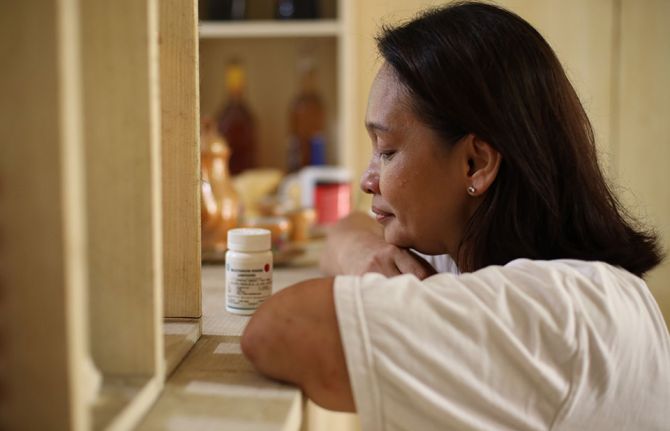
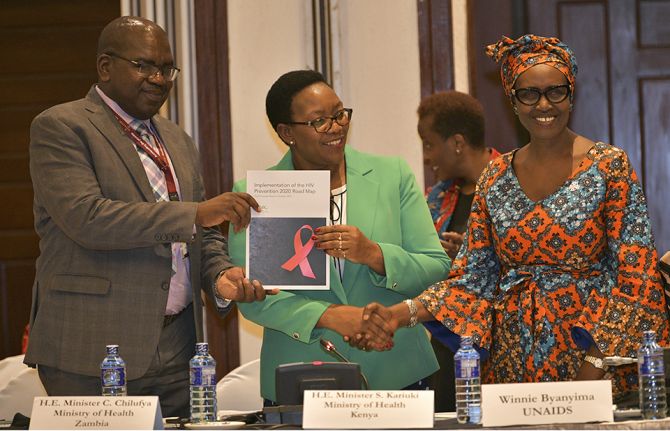
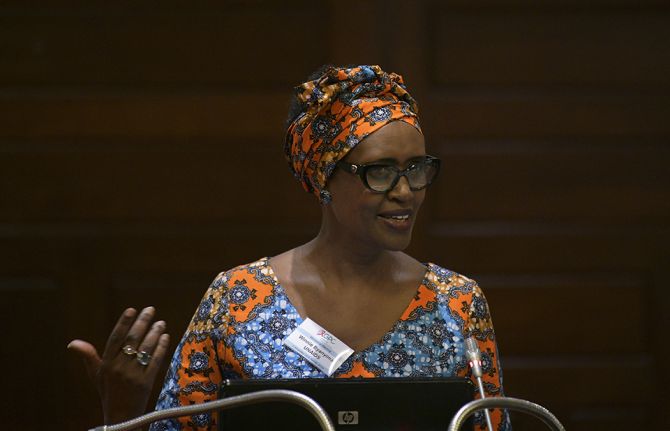
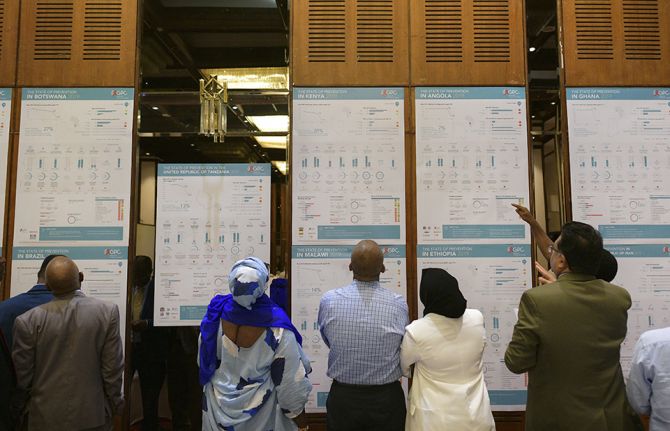
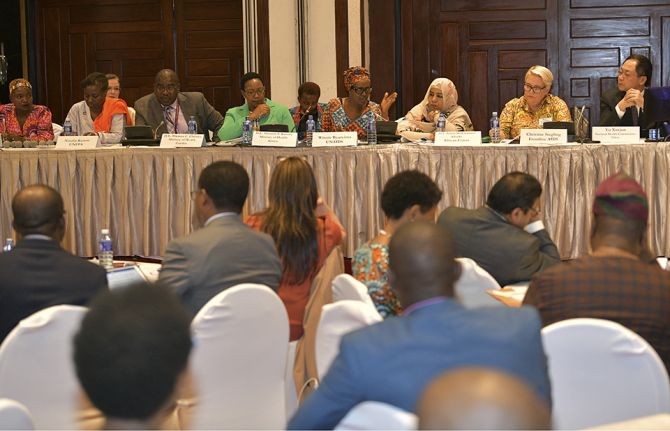
Feature Story
Pace of decline in new adult HIV infections remains short of ambition
14 November 2019
14 November 2019 14 November 2019The co-conveners of the Global HIV Prevention Coalition, UNAIDS and the United Nations Population Fund, have launched a new report on progress made in reducing new HIV infections across 28 countries that have been particularly affected by HIV. The report was launched at the High-Level Meeting of the Global HIV Prevention Coalition, held on 12 November on the sidelines of the Nairobi Summit on ICPD25.
Together, the 28 countries account for 75% of all new HIV infections globally—1.2 million of the 1.7 million new HIV infections among adults in 2018. The report, Implementation of the HIV prevention 2020 road map, shows that among the coalition countries new HIV infections among adults declined on average by 17% since 2010, slightly higher than the global decline of 13%, but far short of the 60% decline needed in 2018 to meet global HIV prevention targets.
“We are nearly 40 years into the HIV epidemic and it is unacceptable that governments and leadership are still shying away from sensitive issues,” said Winnie Byanyima, Executive Director of UNAIDS. “Investments in HIV prevention do not match the needs of our people; in some countries, even the basic commodities like condoms are not available, accessible or affordable in rural areas, for young people or key populations.”
The report shows that some countries have made significant progress, with 12 countries reducing new adult HIV infections by 26% or more since 2010. They include countries with major epidemics, such as South Africa, with a 39% decline, the Democratic Republic of the Congo, with a 37% decline, Uganda, with a 36% decline, and Zimbabwe, with a 28% decline.
Some coalition countries, however, experienced concerning increases in new adult HIV infections, including Nigeria, where new adult HIV infections increased by 8%, and Pakistan, which is experiencing a rapidly growing HIV epidemic among key populations, where new adult HIV infections rose by a staggering 56%. On average, new HIV infections in non-coalition countries remained relatively stable between 2010 and 2018.
The report shows that while there has been some progress in developing programmes for adolescent girls and young women, the Global HIV Prevention Coalition estimates that in 2018 only 34% of the areas with high HIV prevalence had dedicated comprehensive HIV prevention programmes for women and girls—far short of the global target of reaching 90% of adolescent girls and women with these services by 2020. During the meeting, Nyasha Sithole, from the Athena Network, made a strong call for investment and engagement of adolescent girls and young women in HIV prevention and sexual and reproductive health programming.
The Global HIV Prevention Coalition was established in 2017 to galvanize greater commitment and investment in HIV prevention in order to achieve the 2020 prevention target of reducing new HIV infections among adults by 75% by 2020 (against the 2010 baseline). Its added value is clearly visible in a number of focus countries and beyond. Countries confirm that it has promoted a more systematic and structured approach to HIV prevention programming and built momentum in most of the 28 countries; however, much more needs to be done to meet global commitments.
“The coalition has been working as an important platform for countries to share their progress and experiences in HIV prevention, providing a very good opportunity for us to take joint actions to reduce new infections and curb the spread of the disease. This is the key to realize the Sustainable Development Goal target on ending AIDS by 2030,” said Yu Xuejun, Vice-Minister of Health of China and current Chair of the UNAIDS Programme Coordinating Board.
To accelerate progress in stopping new HIV infections, momentum urgently needs to be stepped up by increasing investment, addressing HIV-related stigma and discrimination, addressing the legal, policy and structural barriers to HIV prevention, especially for adolescent girls and young women, key populations and their sexual partners, and taking measures to expand community-based responses.
“I am convinced that community action is the key not only to HIV prevention, but prevention of all ill health. It is for this reason that we have made primary health care the focus of universal health coverage in Kenya,” said Sicily Kariuki, Cabinet Secretary of the Ministry of Health, Kenya.
By taking these critical steps and increasing efforts to address persistent gaps in programme coverage and ensuring that services and community programmes are available to everyone in need, significant progress can be made towards ending AIDS.
During the meeting, which was chaired by the Cabinet Secretary of the Ministry of Health of Kenya and the Minister of Health of Zambia, representatives of the coalition countries made bold commitments and pledges to scale up HIV prevention in their respective countries.



